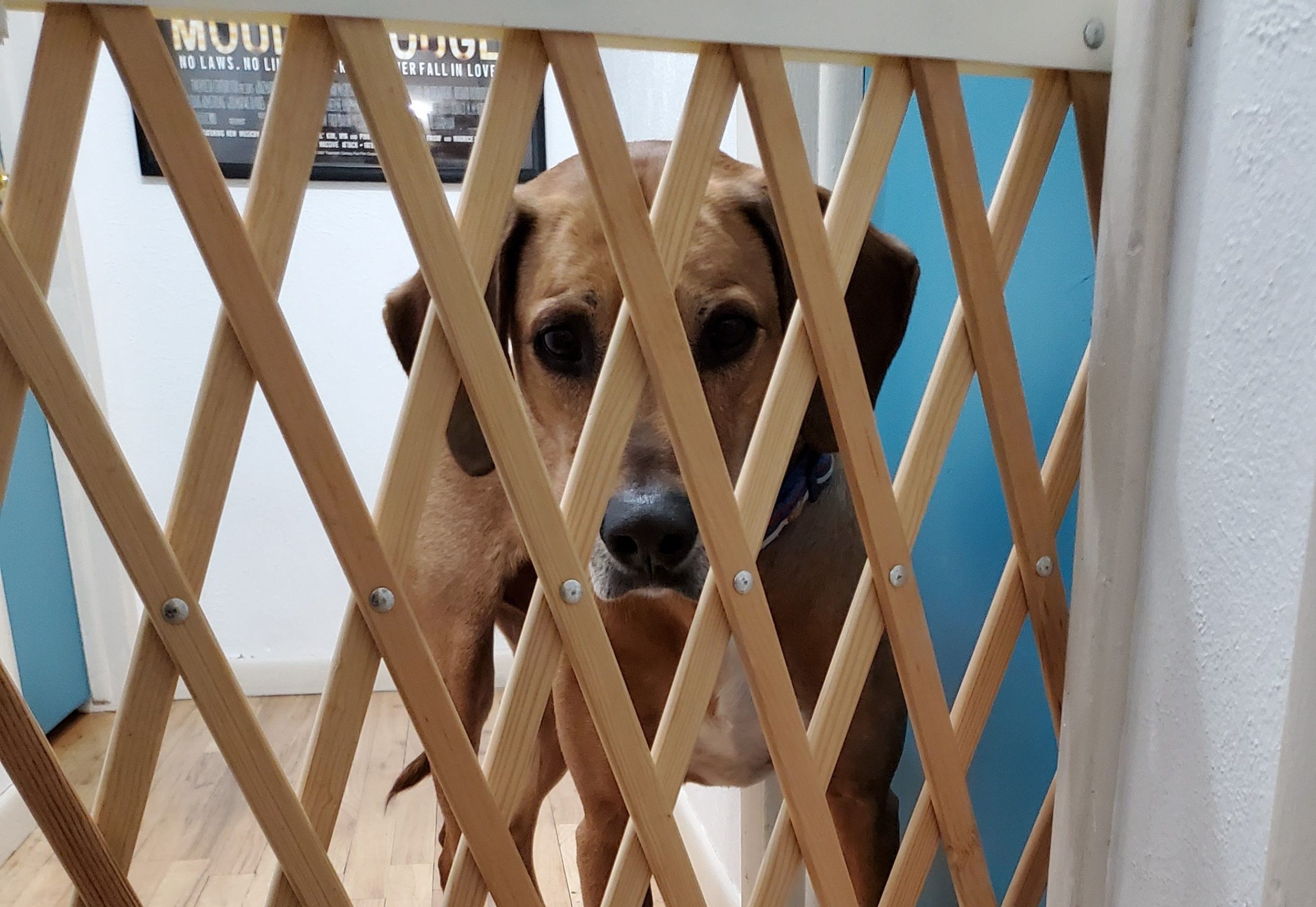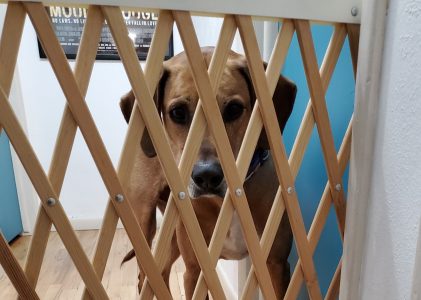At the start of the stay-at-home orders here in Colorado, I was talking with some colleagues about my realization that many dogs may develop separation anxiety as a result of all of us staying at home. This resulted in my teaming up with Amber Quann of Summit Dog Training on two weeks of daily challenges designed to prevent separation anxiety or distress from developing after the world regains normalcy after this pandemic.
These exercises are simple things you can do to help your dogs prepare for your normal routine of leaving the house regularly.
This is only half of the content – for the other 5 daily challenges, be sure to check out Summit Dog Training’s blog on this same topic! You’ll find the missing Even Numbered challenges on the Summit Dog Training blog.
1. Teach your dog that going behind barriers is fun!
Check out the whole post on Facebook here.
3. Practice leaving routines regularly, even when you aren’t actually leaving
This challenge is to remind your dog what it looks like when you leave. Dogs are incredibly in-tune with our routine behaviors and movement. If we are home for a week at a time without leaving, your dog could become concerned when they do finally see your pre-leaving behaviors. One way to prevent this from causing anxiety is to practice these behaviors at times when you aren’t leaving, or you only “pretend” to leave.
These things could include:
– Putting on your shoes
– Picking up your keys
– Putting on your sunglasses
– Securing the house
– Picking up your purse
– Any other behavior you routinely do before you leave
If you practice a few of these things each day, your dog won’t be concerned when they see you actually ready to leave. You can also take a walk around the block without your dog, or just go out the check the mail. This reminds your dog of what the routine is when you walk out the door.
Check out the full Facebook post here.
5. Learn your dog’s body language
This challenge is practice for you, rather than practice for your dog. You are going to work on honing your observational skills by detailing your dog’s body language and behavior when separated from you by a baby gate, or in their crate.
It’s important to understand your dog’s body language when helping them feel comfortable with separation. If your dog is visibly upset by being separated from you, such as pacing, whining, stress panting, or barking, you will need to start very slowly in building up their comfort with separation.
You should always be looking at “relaxed” as your baseline, but what does relaxed look like? I tell people to look at the dog’s muscles, especially in the face. A stressed or anxious dog will have visibly tense muscles, whereas a relaxed dog will not have any tension in the face. If your dog is having trouble lying down, or getting comfortable when separated, they are likely not relaxed. Think about how your dog looks when they sleep, or are getting sleepy, that should be your aim.
There are a lot of great resources on learning dog body language. One of my favorite is the Dog Decoder app (https://www.dogdecoder.com/). Here is a good article from American Veterinarian about dog body language basics, written for veterinarians, but I think it summarizes what you are looking for very clearly: https://www.americanveterinarian.com/journals/amvet/2018/february2018/canine-body-language-basics.
If you are unsure what your dog is telling you with their body language, reach out to a professional trainer who will be able to review video of your dog to help you understand their communication.
Check out the whole Facebook post here.
7. The Calming Yo-Yo Game
This exercise will help build distance and duration to the separation between you and your dog behind a barrier.
Check out the whole Facebook post here.
9. Puzzle toys and enrichment activities
This challenge is about giving your dog something to do while you’re away, and create a positive association with their alone time. There are so many options out on the market for interactive feeders/puzzle toys that we couldn’t possibly cover them all, but here’s some things to look for:
- Is the toy safe to leave with the dog unsupervised? Toys with small pieces that could easily be chewed off and swallowed are not appropriate unsupervised. Watch your dog play with the toy before leaving them with it, and if in doubt, use technology to watch how your dog interacts with the toy in your absence.
- Does my dog know how to use the toy? Dogs don’t always understand interactive toys right off the bat. Take some time to introduce your dog to the toy, and show them how to get food out of it. Different dogs enjoy different types of toys, so you may need to try a few different things.
- How loud is the toy? This is very important if you have roommates, or live in an apartment or condo. Toys made out of hard plastic lend themselves to be thrown around, or even picked up and dropped, and that can make a lot of noise! If this is a concern, look for rubber toys instead.
- How easy is the toy to fill? Some are harder than others, and if you don’t have the time/patience for tedious fill times, that should factor into your decision.
- How easy is the toy to clean? It’s important to clean your toys periodically, they are filled with food, covered with slobber, and rolling around on the floor. Some toys are easier to clean than others, so take that into account.
Check out the whole Facebook post here.
Be sure to check out Days 2, 4, 6, 8, and 10 on Summit Dog Training’s blog!


